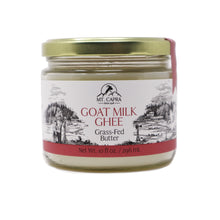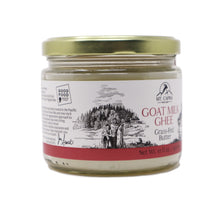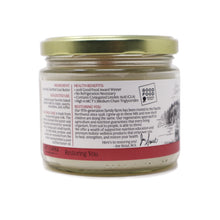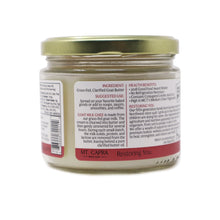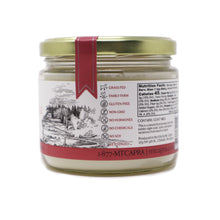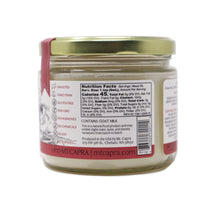
BENEFITS
Comes from pastured, grass-fed goats.
Contains Conjugated Linoleic Acid (CLA)
High in MCT’s (medium chain triglycerides)
Boost beneficial fatty acid profile of smoothies, baked goods, and protein drinks.
Perfect for butter coffee and butter tea!
No added chemicals, antibiotics, GMO’s or growth hormones.
WHAT IS CULTURED GOAT MILK GHEE?
From Day 1 of our initial launch of our delicious, pastured goat milk ghee, we have had requests for a traditional “cultured” or “fermented” version of the product. We are excited to announce that this dream is now a reality.
Mt. Capra’s Cultured Goat Milk Ghee starts as fresh goat milk harvested from our own grass-fed, pastured goats on our farm in the Pacific Northwest. Before being churned into butter, the cream from our goat milk is cultured in a traditional microflora starter for an extended period of microbial fermentation. During each small-batch simmer, the milk solids, protein, and lactose are removed from the butter leaving behind a pure CULTURED butter oil.
Extend the shelf life of your ghee by storing it in the refrigerator. Due to the high content of medium chain fatty acids (MCT’s), cultured goat milk ghee may be semi-liquid at room temperature. Use a clean, dry utensil each time you remove ghee from this jar. This is a natural food product and may exhibit slight color, taste, and density variations from batch to batch.
The fatty acids that make up goat milk are far different than cow milk. Goat milk contains an abundance of medium chain triglycerides (MCT’s) which do not harden at room temperature. If you want your goat milk ghee to be solid like butter, simply keep it in the fridge and it will harden up just fine. There is no problem with keeping it on the shelf as it is perfectly shelf stable.
When making the Cultured Ghee, probiotics are added to the cream and allowed to culture for a time before being churned into butter, then simmered into ghee. This is the traditional way of making ghee. The regular Ghee does not have probiotics added to the cream. Please note that the probiotics will not survive the cooking process of the Ghee.







